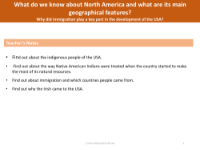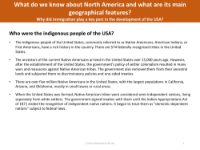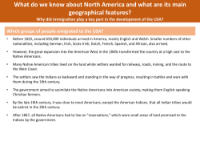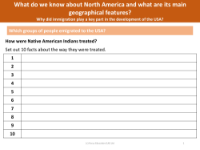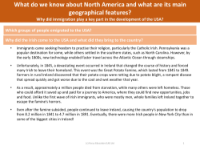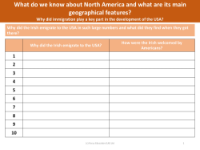Why did immigration play a key part in the development of the USA? - Presentation
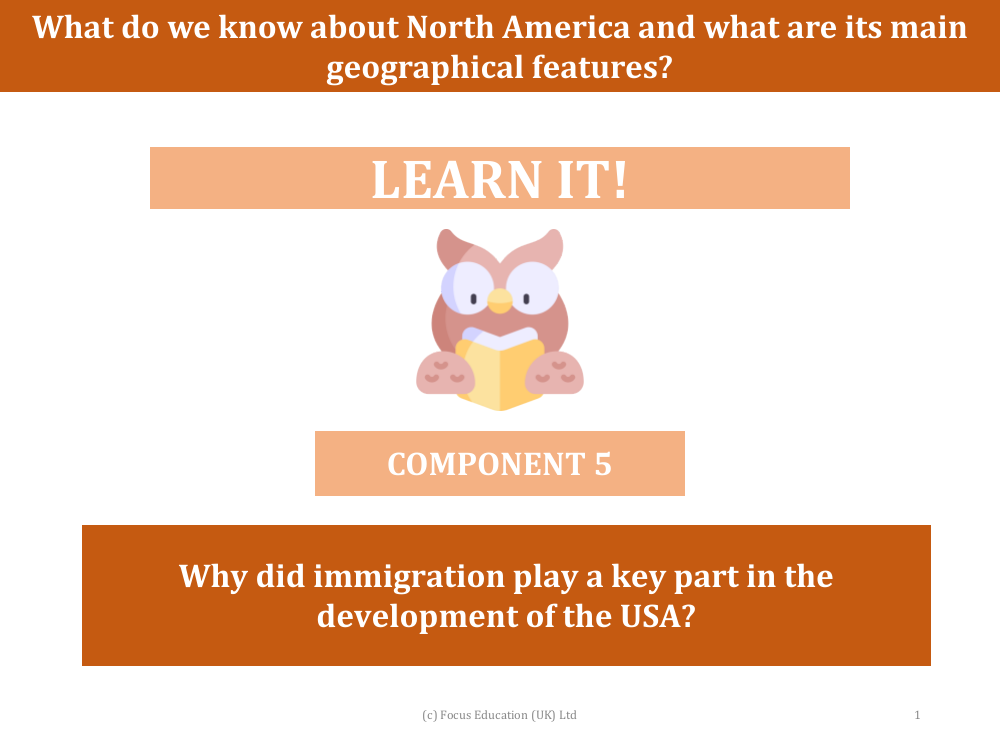
Geography Resource Description
Immigration has been a cornerstone in the tapestry of the United States' history, shaping its demographic and cultural landscape. The presentation explores the reasons behind the significant role that immigration has played in the development of the USA. Initially, the focus is on understanding the indigenous people of the USA, known as Native Americans, American Indians, or First Americans. It delves into their history, revealing that there are 574 federally recognised tribes, with ancestors who arrived over 15,000 years ago. The presentation addresses the impact of settler colonialism, which led to wars, massacres, and the displacement of Native Americans from their ancestral lands. It also discusses the assimilation policies and the transition from treating tribes as semi-independent nations to 'domestic dependent nations' under federal laws.
The narrative then shifts to the waves of immigration to the USA, starting with the arrival of around 650,000 individuals before 1820, predominantly from England and Wales, and smaller groups from other European countries and Africa. The presentation highlights the transformation of the country during the 1840s, which came at a high cost to the Native American population. The Dawes Act of 1887 is discussed, which aimed to divide tribal lands into individual allotments, ultimately leading to the erosion of tribal structures and the impoverishment of Native American reservations. Furthermore, the presentation investigates why the Irish emigrated to the USA, particularly during the Great Potato Famine from 1845 to 1849, which led to mass starvation and emigration. Irish immigrants sought freedom, opportunities, and a chance to escape the famine's devastation, leaving a lasting imprint on the cultural fabric of the United States.
